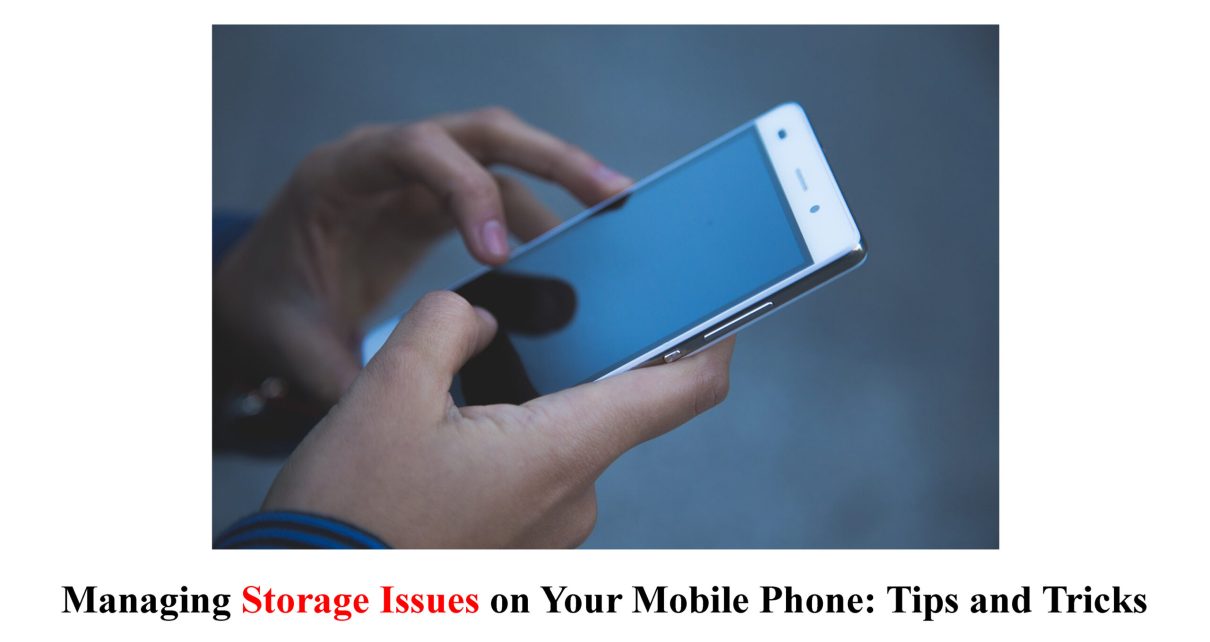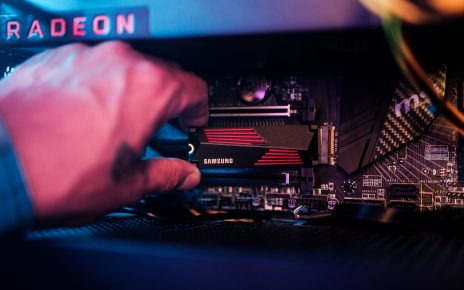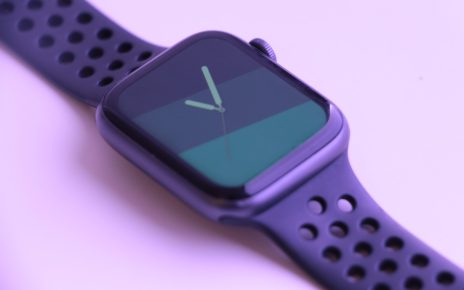Introduction to Storage Issues on Mobile Phones
Is your mobile phone feeling a bit cramped lately? Are you constantly bombarded with notifications about low storage space? If so, you’re not alone. Storage issues on mobile phones have become increasingly common as our devices become more powerful and capable of storing large amounts of data. But fear not! In this blog post, we will explore the reasons behind these storage problems and provide valuable tips and tricks to manage your phone’s storage effectively. So grab your device because it’s time to declutter and make room for what matters!
Reasons for Storage Issues
Storage issues on mobile phones can be frustrating and hinder the smooth functioning of your device. There are several reasons why you might encounter storage problems on your phone.
One common reason is the accumulation of unnecessary files and data over time. As we use our phones to browse the internet, download apps, and capture photos and videos, these files take up a significant amount of space. Additionally, app updates and system backups can consume much of your phone’s storage.
Another factor contributing to storage problems is the increasing size of apps and media files. With each new update, apps become more feature-rich and larger. This means that even if you have ample storage initially, it may quickly get consumed as you install more apps or save high-resolution photos and videos.
Moreover, some pre-installed applications with your phone must be reinstalled or moved to external storage devices. These “bloatware” programs occupy valuable space and can run in the background, further slowing down your device.
Outdated software versions may cause inefficiencies in memory allocation, leading to wasted space on your phone’s internal storage.
Understanding these factors will help you manage your phone’s storage capacity effectively. Stay tuned for our next blog section, where we’ll provide tips on how to check and monitor your phone’s storage!
How to Check and Monitor Your Phone’s Storage
Checking and monitoring your phone’s storage is essential to prevent potential storage issues. Fortunately, it’s a straightforward process that can be done in just a few steps.
Go to your phone’s settings and find the “Storage” or “Storage & USB” option. This will give you an overview of how much storage space is used and available. It may also show you which types of files take up the most space, such as apps, photos, or videos.
Next, look at each category to see where most of your storage is consumed. If you notice that certain apps or files use too much space, consider deleting or transferring them to an external device.
Another useful feature on many smartphones is the ability to clear cache data. Cached data includes temporary files stored by apps for faster loading times but can accumulate over time and take up valuable space. Clearing this cache regularly can help free up extra room on your device.
Monitor your phone’s storage periodically and take action whenever necessary. You can avoid issues like insufficient space for updates or sluggish performance by managing your phone’s storage proactively.
Remember, maintaining adequate storage on your mobile phone doesn’t have to be complicated; with these simple steps for checking and monitoring your device’s memory usage, you’ll always stay one step ahead!
Tips for Managing Storage on Your Phone
1. Delete Unused Apps: Start by looking at the apps on your phone and determine which ones you no longer use or need. Uninstalling these unused apps can free up valuable storage space.
2. Clear Cache and Temporary Files: Over time, cached data and temporary files can accumulate on your phone, consuming precious storage space. Regularly clearing the cache and deleting unnecessary files can help reclaim some of that space.
3. Use Cloud Storage Services: Consider using cloud storage services like Google Drive or Dropbox to store your photos, videos, and other large files. This allows you to access them whenever needed without occupying significant space on your device.
4. Utilize Streaming Services: Instead of downloading large media files onto your phone, consider streaming music or movies directly from online platforms like Spotify or Netflix. This way, you can enjoy your favorite content without worrying about storage limitations.
5. Optimize File Sizes: Some apps allow you to adjust the quality or size of downloaded content, such as images or videos. By reducing file sizes, you can save both storage space and bandwidth.
6. Manage Downloaded Files: Keep an eye on the downloads folder in case it gets cluttered with unnecessary files over time. Please review this folder regularly and delete any unwanted items to keep it organized.
By implementing these tips into your routine, you can effectively manage the storage issues on your mobile phone and ensure that it continues to run smoothly without constant notifications about low disk space!
Utilizing Cloud Storage Services
Managing storage issues has become a common challenge in today’s digital age, where we rely heavily on mobile phones for various tasks. Thankfully, one effective solution is to leverage cloud storage services. By storing your files and data in the cloud, you can free up valuable space on your mobile phone while still being able to access and manage your information whenever you need it.
Cloud storage services like Google Drive, Dropbox, and iCloud offer users a convenient way to store their photos, videos, documents, and more. These platforms allow you to upload files from your mobile phone directly to the cloud with just a few taps. They provide seamless integration across multiple devices like smartphones, tablets, and computers.
One of the critical advantages of utilizing cloud storage is that it eliminates the need for physical storage devices like external hard drives or memory cards. You can securely store everything in the virtual realm instead of worrying about running out of space or losing important files due to device damage or loss.
Moreover, Cloud storage also offers automatic backup features that ensure your data remains safe even if something happens to your mobile phone. This means that even if you accidentally delete something from your device or experience a system failure, you can easily retrieve those files from the cloud without hassle.
Furthermore, These services often come with generous amounts of free storage space and affordable subscription plans for additional capacity. You can choose whichever option best suits your needs and budget.
Additionally, with many cloud storage providers offering synchronization capabilities across devices,
you’ll have instant access to all your files no matter which device you use. This makes it incredibly convenient when switching between different gadgets throughout the day.
To sum up, utilizing cloud storage services is an excellent way to effectively manage storage issues on your mobile phone. Not only does it help declutter your device by offloading large files onto secure servers, but ensures that your data remains accessible, organized, and protected. So why don’t you take advantage?
Clearing Cache and Unnecessary Files
One effective way to manage storage issues on your mobile phone is by clearing cache and unnecessary files. Over time, apps accumulate temporary data known as cache, which can take up a significant amount of space on your device.
To clear the cache, go to your phone’s settings and find the “Storage” or “Device Maintenance” option. From there, you can simultaneously remove the store for specific or all apps. This will free up valuable storage space without affecting your personal files or app settings.
In addition to clearing the cache, it’s also important to regularly delete unnecessary files, such as old photos, videos, and documents that are no longer needed. You can use file management apps or browse your device’s folders to identify and delete these files.
By regularly clearing cache and unnecessary files from your mobile phone, you can optimize its storage capacity and ensure smoother performance. Remember to back up any critical files before deleting them permanently. So why wait? Start decluttering your device today!
Conclusion
Managing storage issues on your mobile phone can be frustrating but manageable with the right tips and tricks. By understanding the reasons behind these storage issues and taking proactive steps to monitor and manage your phone’s storage, you can always have enough space for your important files and apps.
Please check your phone’s storage capacity and delete any unnecessary files or apps taking up valuable space. You can use cloud storage services to offload some of the burden from your device’s internal memory. Clearing cache and unnecessary files can also help free up space for more critical data.
Remember that while these tips may help alleviate some immediate storage concerns, it is always wise to periodically evaluate whether you need an upgrade for higher internal memory or external SD cards.
By staying vigilant about managing your mobile phone’s storage, you will avoid those dreaded “storage full” notifications and ensure optimal performance from your device. So take control of your smartphone’s storage today and enjoy a clutter-free experience!
Read More: Solutions for Slow Performance on Your Mobile Phone



